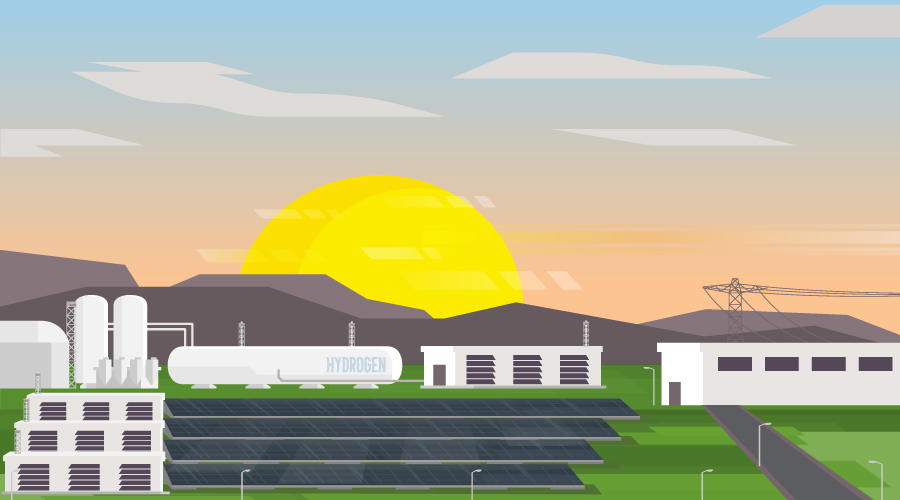Philadelphia Mandates Building Energy Tune-Ups
Law requires inspections, low-cost energy improvements
On Dec. 4, 2019, Philadelphia Mayor Jim Kenney signed into law a “building tune-up” policy addressing one of the city’s biggest sources of carbon emissions: large commercial and institutional buildings.
The ordinance amends the Philadelphia Code, Section 9-3400, requiring non-residential buildings larger than 50,000 square feet to perform regular building inspections and tune-ups to improve their energy efficiency. Philadelphia projects that the policy, the city’s first to require building energy performance improvements, will cut 200,000 metric tons of carbon pollution. The goal is to reduce carbon emissions in Philadelphia 80 percent by 2050.
Coming on the heels of New York’s Climate Mobilization Act and Washington DC’s Clean Energy DC Omnibus Act, as well as Seattle’s Building Tune-Ups policy, the Philadelphia building tune-up law is part of a trend in American cities to address climate change by making buildings more energy efficient. Philadelphia’s new law builds on its energy benchmarking program, enacted in 2012, which requires building owners to publicly report yearly energy use. “Overall, buildings that have participated in the program have improved energy performance 5 percent and cut greenhouse gas emissions (GHGs) at least 12 percent since 2013,” says Philadelphia’s 2019 Municipal Energy Benchmarking Report. The city hopes that by requiring implementation of low-cost energy-saving tune-ups, they can push energy savings further.
Requirements of new law
“Tune-ups” of building energy and water systems are mandated by the law, including inspection and corrective action components. Systems include:
• Building envelope
• HVAC
• Conveying systems
• Domestic hot water systems
• Electrical lighting systems
Inspections and corrective actions cover:
• Outside air control, including calculation of ventilation requirements, measurement of actual ventilation rates, and determination of optimal ventilation delivery and control.
• Design issues leading to high energy use, such as missing insulation, large leaks, and unbalanced systems.
• Optimization of sensors, set points, schedules, and equipment controls for efficient operation.
• Lighting, including identification of outdated technologies, over-lit spaces, and areas needing lighting controls.
• Plumbing system maintenance.
• Energy and water bill data analyses.
• Common maintenance items that impact energy usage.
Excluded are systems owned by tenants, condo owners, or co-op unit shareholders, as well as systems fully maintained by tenants that are within the tenant’s space or that exclusively serve that space. Industrial processes within the building are also excluded.
A “qualified tune-up specialist,” i.e. a licensed professional engineer or certified energy manager, supervises the inspection and prepares a signed inspection report with findings and recommendations, which is submitted to the building owner and to the Office of Sustainability.
The corrective action component of the tune-up must resolve all adjustments and minor repairs (defined as low-cost repairs to existing equipment that would not require permits) identified in the inspection. The Office of Sustainability will provide standards for determining which adjustments are “low-cost,” as well as how to optimize usage to maximize energy and water savings and return on investment while minimizing cost. The law authorizes the Office of Sustainability to further define “corrective action” in forthcoming regulations.
Violation carries a fine of $2,000. Beginning 30 days after the deadline, an additional fine of $500 per day will be imposed, so the impetus to have the tune-up completed on time is forceful.
High performance is rewarded
Exemptions are provided for high-performance buildings that demonstrate any of the following conditions at least 180 days before the scheduled tune-up:
• Certified Energy Star score of at least 75 within the year immediately preceding the scheduled tune-up.
• LEED Gold Rating for O+M v4, Net-Zero Energy Certification, or equivalent or better certification, within three years prior to scheduled tune-up.
• Completed a utility retro-commissioning incentive offering under a Pennsylvania Public Utility Commission-approved energy efficiency program or other approved program within the preceding three years.
• Completed a full retro- or re-commissioning procedure with documentation of optimized building performance, within three years prior.
• Achieved energy savings of at least 15 percent and provided measurement/verification to Office of Sustainability within three years prior.
• Underwent an energy audit at least as stringent as ASHRAE Level II standard and implemented all no/low-cost energy efficiency measures identified.
• Already has in place active optimization efforts, including monitoring and ongoing commissioning.
• Received an initial certificate of occupancy within the three years prior to the scheduled tune-up.
• Is scheduled to be demolished within a year of the scheduled tune-up.
• Other factors approved by the director of the Office of Sustainability.
What will the city do with this information?
Public shaming, of a sort, aims to further encourage compliance. The Office of Sustainability will publish a public inventory of properties certified as “high performance,” as well as those that completed a tune-up, must complete one in a future year, or are in violation for non-compliance.
Every year, the Office of Sustainability will submit a report to the Council that addresses the energy and water efficiency of Philadelphia buildings and evaluates the accuracy of building energy tune-up reports. The annual report will also consider compliance and make recommendations for strengthening enforcement.
What to do now
With the deadline for the largest buildings coming up in 2021, and deadlines for other buildings following closely behind, building owners and managers should act now to evaluate building systems and plan for implementing upgrades and repairs. The building envelope, including facades, roofs, windows, and exterior doors, is critical to energy performance. Poorly functioning building enclosures waste energy, lower benchmarking scores, and place excess demand on heating and cooling equipment. Working from the building envelope inward can help optimize HVAC performance by addressing energy leaks, allowing owners to more cost-effectively meet efficiency goals.
Alison B. Hoffmann is communications manager, Hoffmann Architects, Inc.
Philadelphia building tune-up schedule
Building size
Report deadline
200,000 sq. ft. or larger: Sept. 30, 2021
100,000 – 200,000 sq. ft.: Sept. 30, 2022
70,000 – 100,000 sq. ft.: Sept. 30, 2023
50,000 – 70,000 sq. ft.: Sept. 30, 2024
Subsequent tune-ups are every five years after the original tune-up date. Inspections and corrective actions must take place no earlier than two years prior to the scheduled tune-up date.
For a building owner with 20 or more covered buildings or cumulative floor area of 5 million square feet or more, or for School District of Philadelphia buildings, application may be made to defer the deadline, but not later than Sept.er 30, 2024. Other extensions for good cause might include less than 50 percent occupancy or compliance that would place a burden “disproportionate to the value of the building.”
Related Topics:














